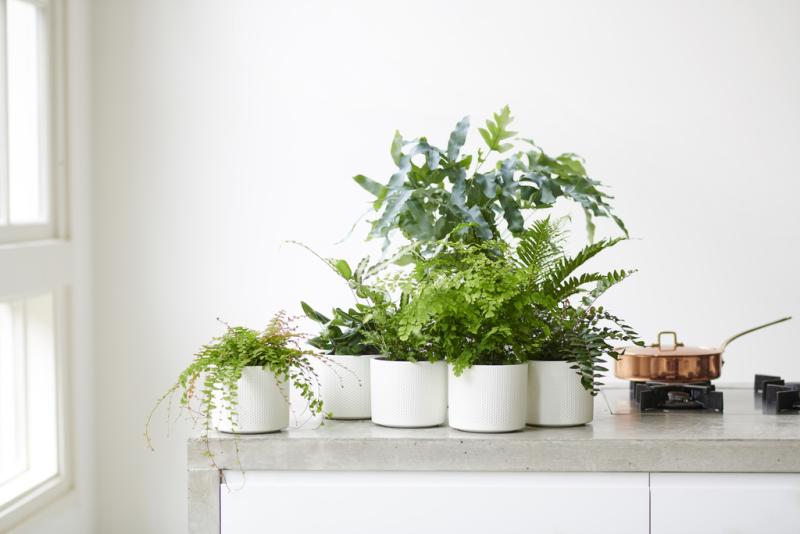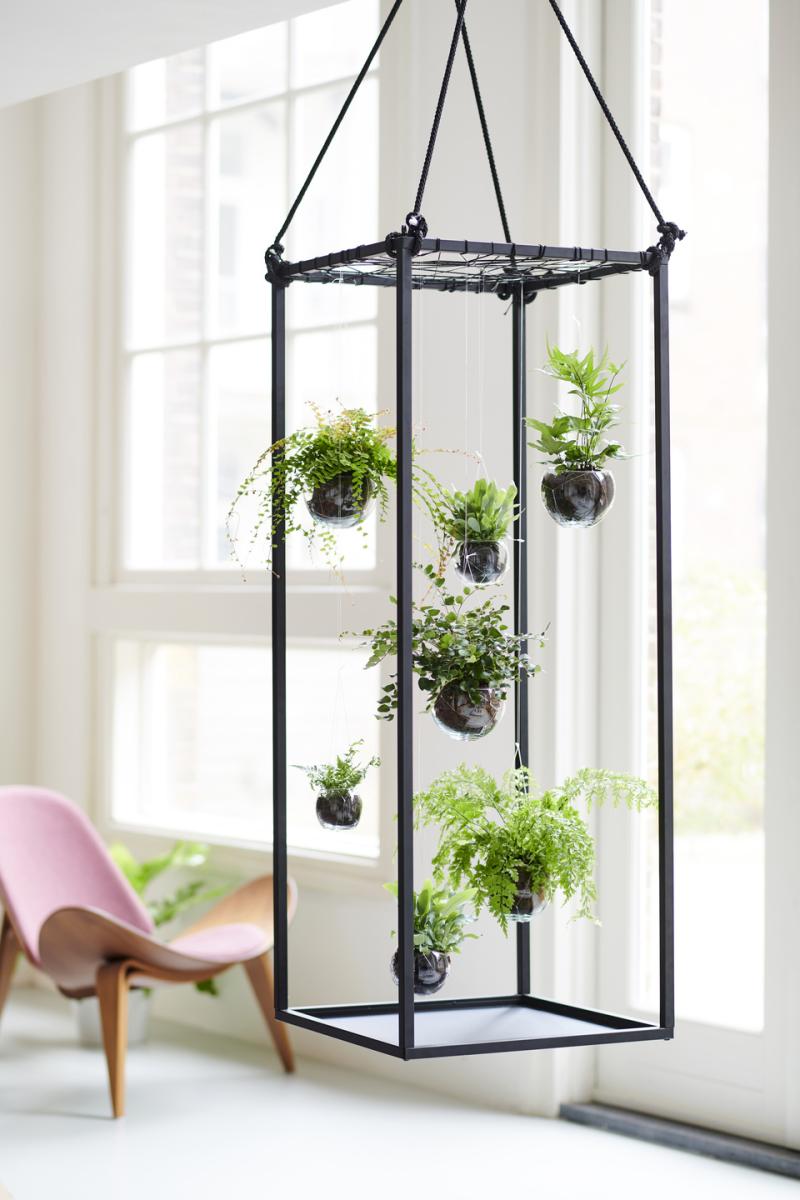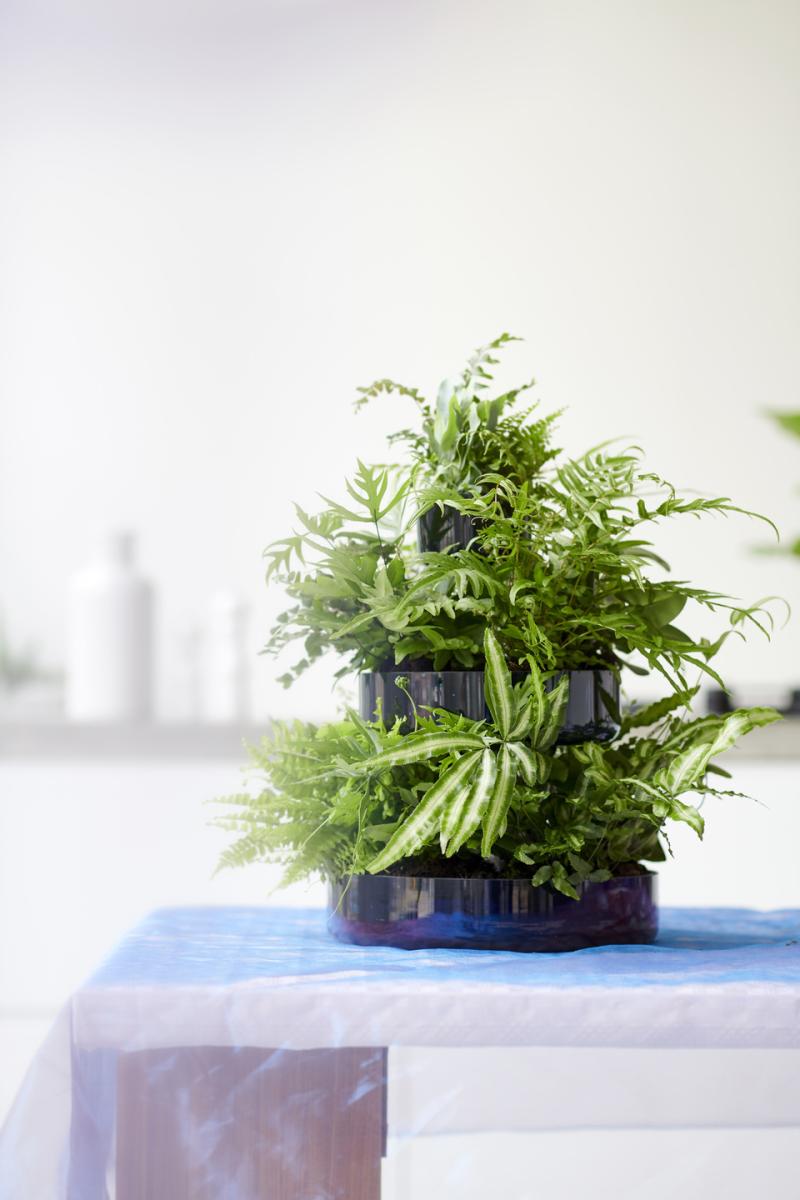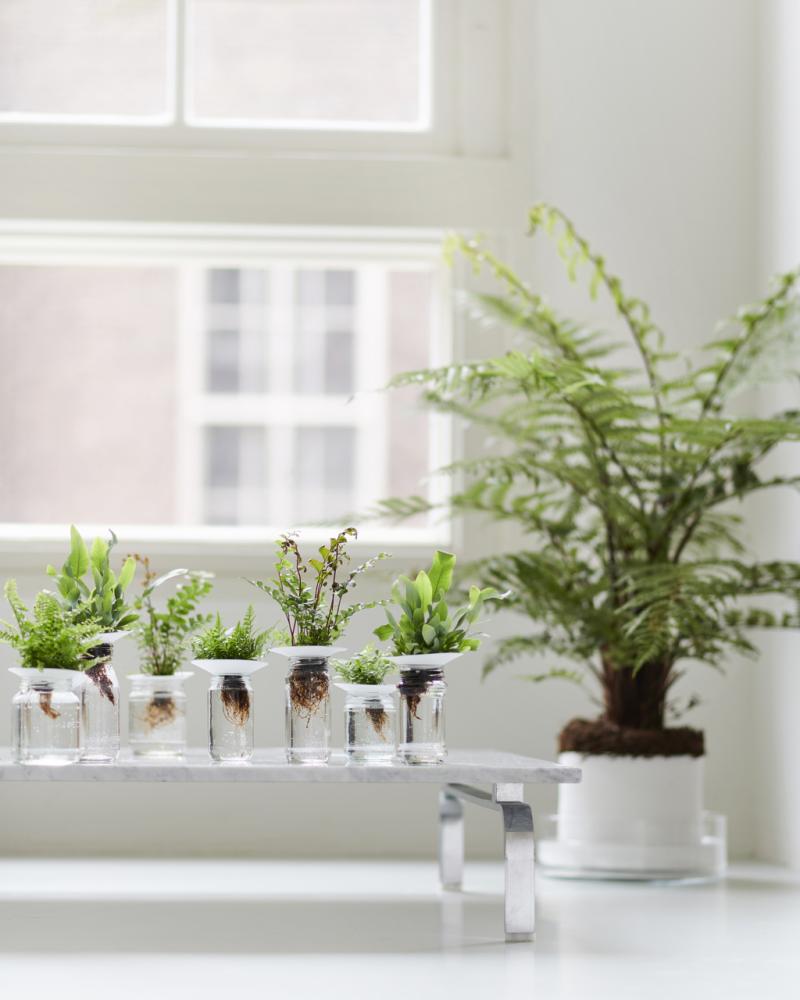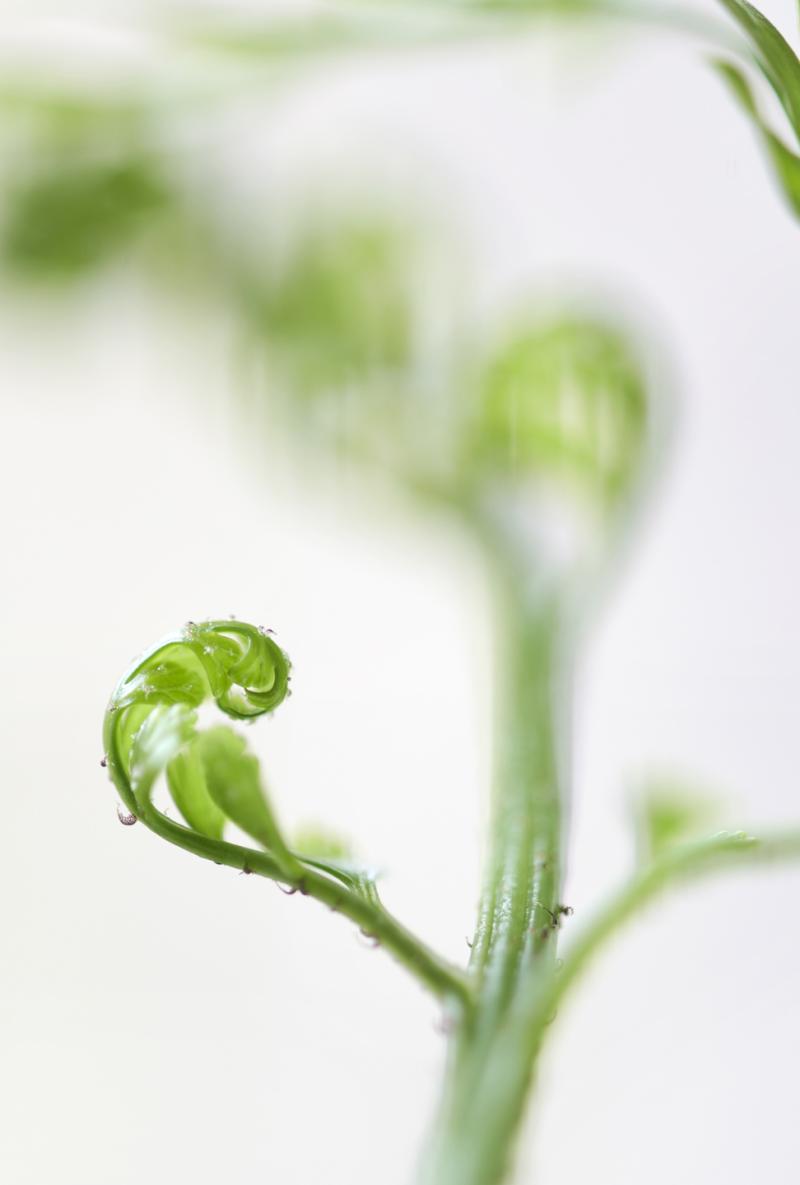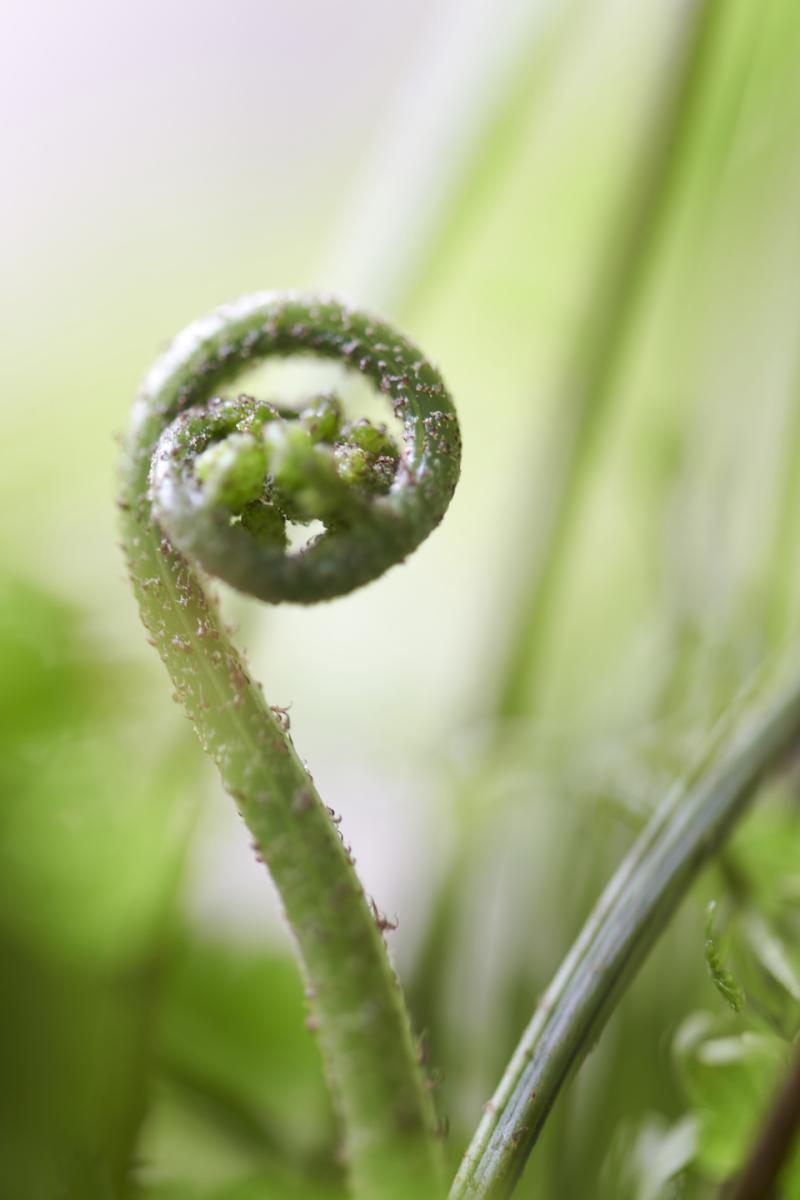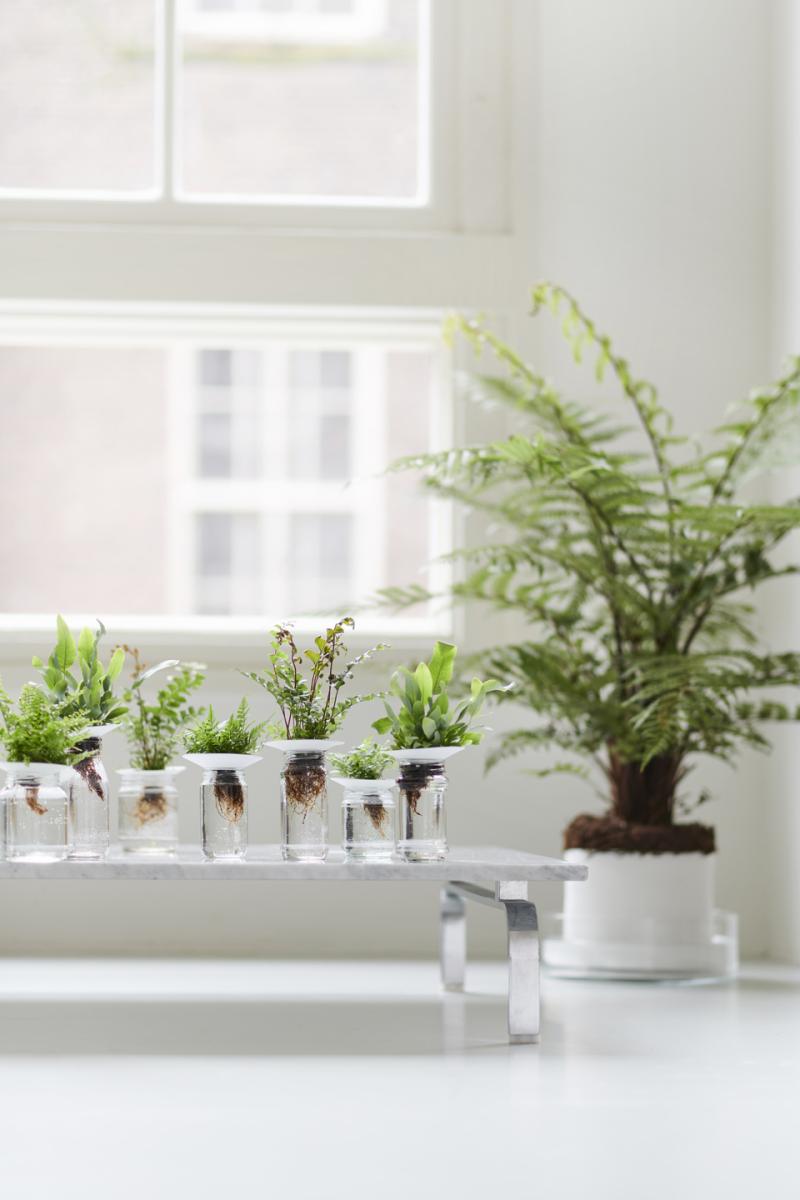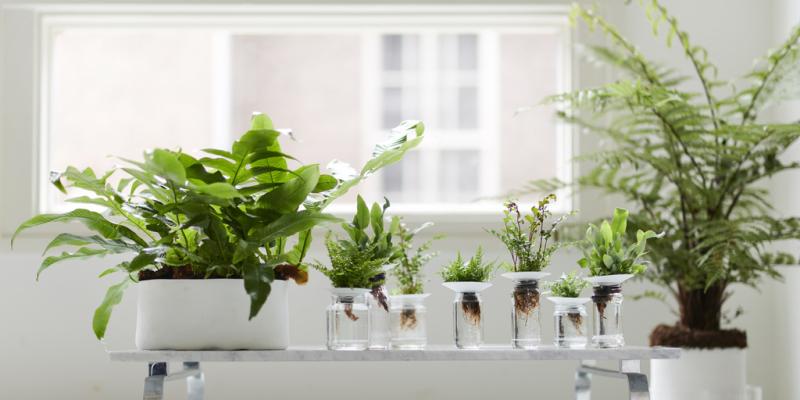February 2019: Ferns Houseplants of the month
Ferns and their story
From bushy to stylised, and from dark green to silvery grey-green: ferns come in many forms with leaves that can also vary considerably. One has curls, the other more feather-like, and a third has no frills at all. Together they form an attractive group of green plants that fit with the growing interest in botanical elements and collections in the home. As a bonus, ferns also help keep the air in the home healthy.
Origin
Ferns are amongst the world’s oldest plants. Fossil remains have been found dating back some 420 million years, and for a long time (tree) ferns were the most common plant on the planet's surface. Seams of coal are made up of the residue of dead ferns, amongst other things. There are some 10,000 different species that grow anywhere that gets some rain. Only in deserts and locations with permanent snow are there no ferns in the landscape. The ferns used as houseplants come from tropical and subtropical regions.
Spore plant
Ferns propagate themselves by means of spores. Spore casings are usually located on the underside of the leaf: along veins, on leaf edges, on the end of the leaf or scattered. Once the spore casings are ripe, they burst open and the spores are dropped on the damp places where ferns naturally grow.
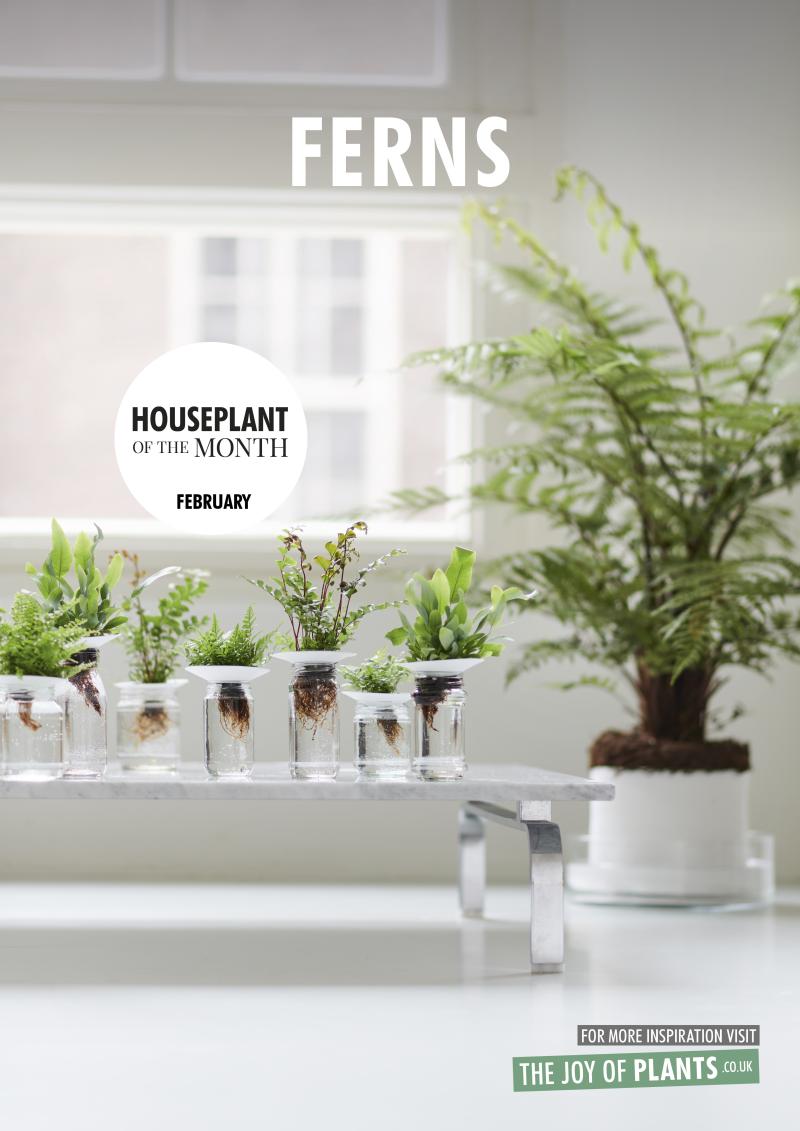
The most popular ferns for use as houseplants are the staghorn fern (Platycerium), bird’s nest fern (Asplenium), deersfoot fern (Davallia), blue star fern (Phlebodium), maidenhair fern (Adiantum), holly fern (Cyrtomium), brake fern and ribbon fern (Pteris), and cliffbrake fern (Pellaea). Species with harder and tougher foliage are easier to look after because they evaporate less moisture. Bird’s nest ferns and staghorn ferns are best suited for use as hanging ferns.
What to look for when buying ferns
- Size, pot and height must be in proportion.
- A mixed tray of ferns must offer sufficient variety.
- The plants must be adequately damp. Small pot sizes in particular dry out quickly. Plants that have been left dry for too long will quickly suffer from shed leaves, dry leaves or brown leaf edges.
- The plants must be free of yellow foliage. The staghorn fern’s grey-brown leaf is part of the plant.
- Check for mealybug and scale insects. These are often difficult to eradicate in the retail chain or end user.
- The temperature must be at least 12-15 °C or higher during the shipping and storage of house ferns. At lower temperatures it is important that the plants are in a sleeve in order to prevent cold damage, which takes the form of leaf discolouration. At temperatures above 18°C there is a risk that the plants will dry out.
Care tips for consumers
- Ferns like a light spot, but not full sun.
- Do not water into the plant but onto the soil, and ensure that the soil is always damp.
- Ferns do well in a spot with high humidity like the kitchen or the bathroom.
- If the fern is placed in a room with dry air, place the planter in an attractive bowl with water that can evaporate around the plant.
- Give some plant food once every 3 to 4 weeks during the growing season.
- Ferns thrive on regular spraying and misting.
- Yellow or old leaves can be cut off.
Sales and display for ferns
A modern way to display ferns is to place various species in a row in identical jars like in a laboratory. Also play with the various ways in which they can be used: show hanging varieties, but also ferns placed on water (evaporation usually creates good humility) and in a moss ball (kokedama) on a dish. Bird’s nest fern and staghorn fern can also cope with being mounted on a piece of wood, for example.
Images of ferns
You can download and use the images below free of charge if you credit Thejoyofplants.co.uk
Instagram: @thejoyofplants
Facebook: @thejoyofplants
Twitter: @thejoyofplants
For more information about the 2019 Houseplants of the Month selection, click here.
Ferns posters
You can download the posters using the links below

